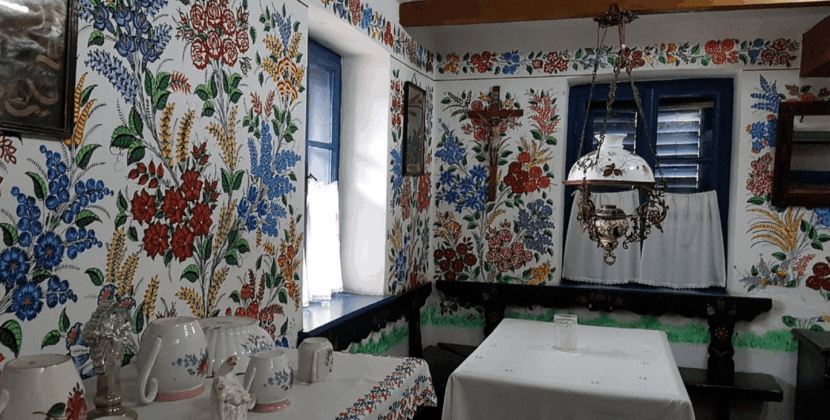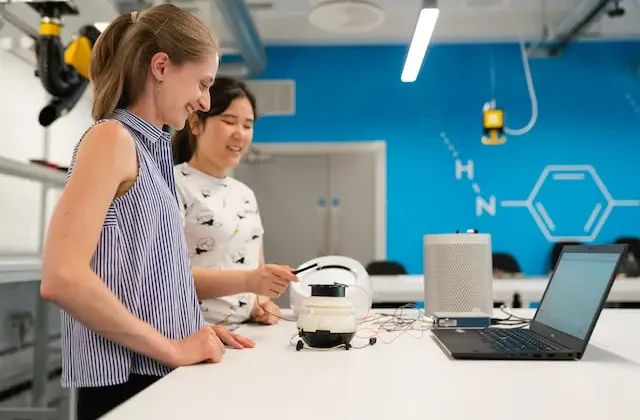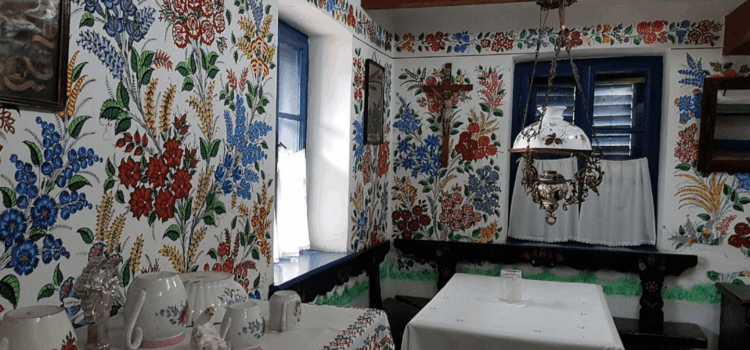
Kalocsa, a charming town in southern Hungary, is a vibrant tapestry of culture, faith, and culinary heritage. Known as the “Paprika Capital” of Hungary, Kalocsa is famous for its spicy red spice, historic cathedral, and intricate folk art. Nestled along the Danube River, this small town offers a peaceful escape filled with colorful traditions, religious landmarks, and warm hospitality. In this beginner-friendly guide, we’ll take you through a perfect day in Kalocsa, exploring its paprika fields, sacred sites, and painted crafts, with practical tips for an unforgettable visit.
Morning: Arrival and Paprika Museum
Begin your day in Kalocsa, a three-hour drive or bus ride from Budapest. The town’s quiet streets and colorful houses create a welcoming atmosphere, perfect for a relaxing adventure. Start at the Paprika Museum, a unique attraction that celebrates Kalocsa’s most famous export. Housed in a historic building, the museum showcases the history of paprika cultivation, from planting to grinding. Interactive displays and spice samples make it easy to understand why Kalocsa’s paprika is a cornerstone of Hungarian cuisine.
For those planning a trip to Hungary’s cultural hubs, thehopeholders com offers guides on unique destinations like Kalocsa. Checking out site:thehopeholders.com can help you craft an itinerary that includes the Paprika Museum and other local gems. If you’re curious about quirky topics, a search for are blue lemons real might pique your interest, but Kalocsa’s spicy heritage is a true highlight.
Mid-Morning: Visit St. Mary’s Cathedral
A short walk from the museum leads to St. Mary’s Cathedral, the spiritual heart of Kalocsa. This Baroque masterpiece, with its twin towers and golden interior, is one of Hungary’s most important religious sites. Step inside to admire the ornate frescoes, intricate altars, and a historic organ that hosts summer concerts. The cathedral’s serene ambiance and guided tours, available in English, make it accessible for beginners eager to explore Kalocsa’s pious traditions.
For photography enthusiasts capturing the cathedral, thelifeconquer com shares tips on photographing sacred spaces. Visit site:thelifeconquer.com for advice on framing St. Mary’s golden details. If you’re into cultural storytelling, tapisserveis com explores religious traditions worldwide, including Kalocsa’s Catholic heritage. Check site:tapisserveis.com for more.
Late Morning: Explore the Archbishop’s Palace
Adjacent to the cathedral, the Archbishop’s Palace is a cultural treasure that houses the Astriceum Museum and a historic library. The museum displays religious artifacts, including golden chalices and embroidered vestments, while the library boasts over 150,000 volumes, some dating back to the Middle Ages. The palace’s Baroque architecture and tranquil courtyard add to the experience, offering a glimpse into Kalocsa’s role as a seat of the Hungarian Catholic Church.
For travelers seeking unique cultural sites, rudeforce com highlights offbeat museums worldwide, including tips for visiting the Astriceum. Visit site:rudeforce.com for ideas on incorporating this stop into your day. If you’re organizing a group visit, tools like carrons funeral home might inspire community planning, though Kalocsa’s charm is best savored slowly.
Lunch: Savor Paprika-Infused Dishes
By midday, head to a local restaurant, such as Halászcsárda, for a taste of Kalocsa’s paprika-infused cuisine. Try specialties like paprika chicken, a creamy dish with a spicy kick, or halászlé, a fiery fish soup made with local river fish. Pair your meal with a glass of Hungarian wine or pálinka, a fruit brandy. For dessert, enjoy somlói galuska, a decadent sponge cake with chocolate sauce. The restaurant’s riverside setting adds to the dining experience.
For food lovers, pearledesigns com provides guides on regional cuisines across Europe. Visit site:pearledesigns.com for tips on savoring Kalocsa’s paprika dishes. If you’re into unique recipes, a search for disney dreamlight valley baked carp or baked carp recipe dreamlight valley might spark curiosity, but Kalocsa’s spicy flavors are a true delight.
Early Afternoon: Discover Folk Art at the Károly Viski Museum
Kalocsa is renowned for its vibrant folk art, particularly its colorful embroidery and painted patterns. Visit the Károly Viski Museum, a small but charming museum dedicated to the town’s decorative traditions. Exhibits showcase hand-embroidered textiles, painted furniture, and wall art, often featuring floral motifs in bright reds and blues. Demonstrations by local artisans offer a hands-on look at the techniques, making it a beginner-friendly way to appreciate Kalocsa’s craft heritage.
For those seeking authentic cultural experiences, metricsgoddess com explores traditional crafts worldwide, offering inspiration for appreciating Kalocsa’s folk art. Check site:metricsgoddess.com for ideas on finding unique souvenirs. If you’re into creative concepts, how to make storybook in little alchemy 1 or how to make a storybook in little alchemy might evoke a whimsical vibe, but Kalocsa’s painted traditions are captivating.
Mid-Afternoon: Stroll Through Paprika Fields
Kalocsa’s paprika fields are a sight to behold, especially in late summer when the peppers ripen to a vibrant red. Take a short drive or guided tour to the outskirts of town, where sprawling fields showcase the region’s agricultural heart. Learn about the paprika harvest, from picking to drying, and snap photos of the colorful landscape. The fields’ open spaces and fresh air offer a refreshing contrast to the town’s historic sites.
For outdoor enthusiasts, mangthy com shares guides on exploring agricultural landscapes worldwide. Visit site:mangthy.com for tips on visiting Kalocsa’s paprika fields. If you’re into seasonal vibes, morning fall images or good morning fall day might resonate, but the fields’ summer glow is a year-round treasure. For fitness buffs, arri fitness or arri fitness mcallen might inspire, though Kalocsa’s flat paths suit beginners.
Late Afternoon: Relax at a Cafe
As the afternoon winds down, settle into a cozy cafe, such as Kalocsai Kávéház, for a coffee or homemade pastry. Try a slice of dobostorta, a layered sponge cake, while enjoying the town’s quiet charm. The cafe’s free Wi-Fi makes it easy to share photos or troubleshoot tech issues like why are all my apps invisible or my apps are invisible. The relaxed setting is perfect for reflecting on Kalocsa’s paprika and piety.
For digital nomads, handsonglobes com offers advice on working remotely from small towns like Kalocsa. Visit site:handsonglobes.com for tips on balancing work and exploration. If you’re into modern entertainment, platforms like rumble.compair might keep you connected, but Kalocsa’s serene cafes are ideal for unplugging.
Evening: Dinner by the Danube
Cap off your day with dinner at a riverside restaurant, such as Csajda Csárda, known for its hearty Hungarian dishes and paprika-rich flavors. Savor roasted pork with paprika sauce or stuffed peppers, paired with a glass of local wine. The warm atmosphere and Danube views create a memorable end to your day. Book a table in advance to secure a spot, especially during summer when Kalocsa attracts more visitors.
For budget travelers, justpuzzled com shares tips on affordable dining in small towns. Visit site:justpuzzled.com for advice on enjoying Kalocsa’s cuisine without breaking the bank. If you’re seeking local connections, ghoe events 2023 or ghoe 2023 concert might inspire community vibes, but Kalocsa’s welcoming locals create a warm atmosphere.
Portfolio
The portfolio of experiences in Kalocsa is a vibrant blend of culinary, spiritual, and artistic traditions. The Paprika Museum and fields celebrate the town’s spicy legacy, offering a taste of Hungary’s culinary soul, while St. Mary’s Cathedral and the Archbishop’s Palace embody its deep-rooted piety, with stunning architecture and sacred artifacts. The Károly Viski Museum showcases Kalocsa’s painted folk art, preserving the colorful patterns that define its cultural identity. Together, these elements create a rich, accessible experience that appeals to foodies, history buffs, and art lovers alike, making Kalocsa a standout destination in southern Hungary.
Night: Evening Stroll in Kalocsa
As night falls, take a final stroll through Kalocsa’s historic center, where the cathedral’s illuminated towers cast a magical glow. The quiet streets, lined with colorful houses, offer a peaceful setting for reflecting on the day’s discoveries. If you’re staying overnight, many guesthouses provide cozy terraces for stargazing, adding a serene end to your visit. Kalocsa’s small size makes it easy to wander without a plan.
For evening inspiration, mytorracare net highlights nighttime activities in historic towns. Visit site:mytorracare.net for ideas on savoring Kalocsa’s evening ambiance. If you’re into creative concepts, death in little alchemy 2 or how do you make a death in little alchemy 2 might spark curiosity, but Kalocsa’s starry nights are the real star.
Practical Tips for Visiting Kalocsa
Kalocsa is easily reached by bus or car from Budapest, with a scenic ride through the Hungarian plains. The town is compact and walkable, with most attractions in the historic center. Wear comfortable shoes for cobblestone streets and bring a light jacket for cooler evenings. Accommodations include guesthouses and small hotels, many offering homemade breakfasts. Entry to the Paprika Museum and cathedral is affordable, with discounts for families. Consider visiting during the Kalocsa Paprika Festival in September for a lively cultural experience.
If you’re into unique dining experiences, scratch kitchen hawaii kai or scratch kitchen hawaii kai menu might inspire a culinary vibe, but Kalocsa’s paprika-infused dishes take center stage. The town’s accessibility and budget-friendly attractions make it ideal for all travelers.
Why Kalocsa Stands Out
Kalocsa’s unique blend of paprika culture, religious heritage, and folk art sets it apart from Hungary’s busier destinations. Unlike urban attractions, it offers an intimate, authentic experience, perfect for beginners and culture lovers. Its vibrant traditions, from spicy cuisine to painted crafts, create a sense of stepping into a living cultural story.
Final Thoughts
Kalocsa is a destination that captivates with its paprika fields, sacred cathedral, and colorful folk art. From exploring the Paprika Museum to dining by the Danube, every moment creates lasting memories. Whether you’re drawn to culinary delights, spiritual landmarks, or artistic traditions, Kalocsa offers a perfect escape into Hungary’s heart. Plan your visit today and uncover the magic of this vibrant town.















